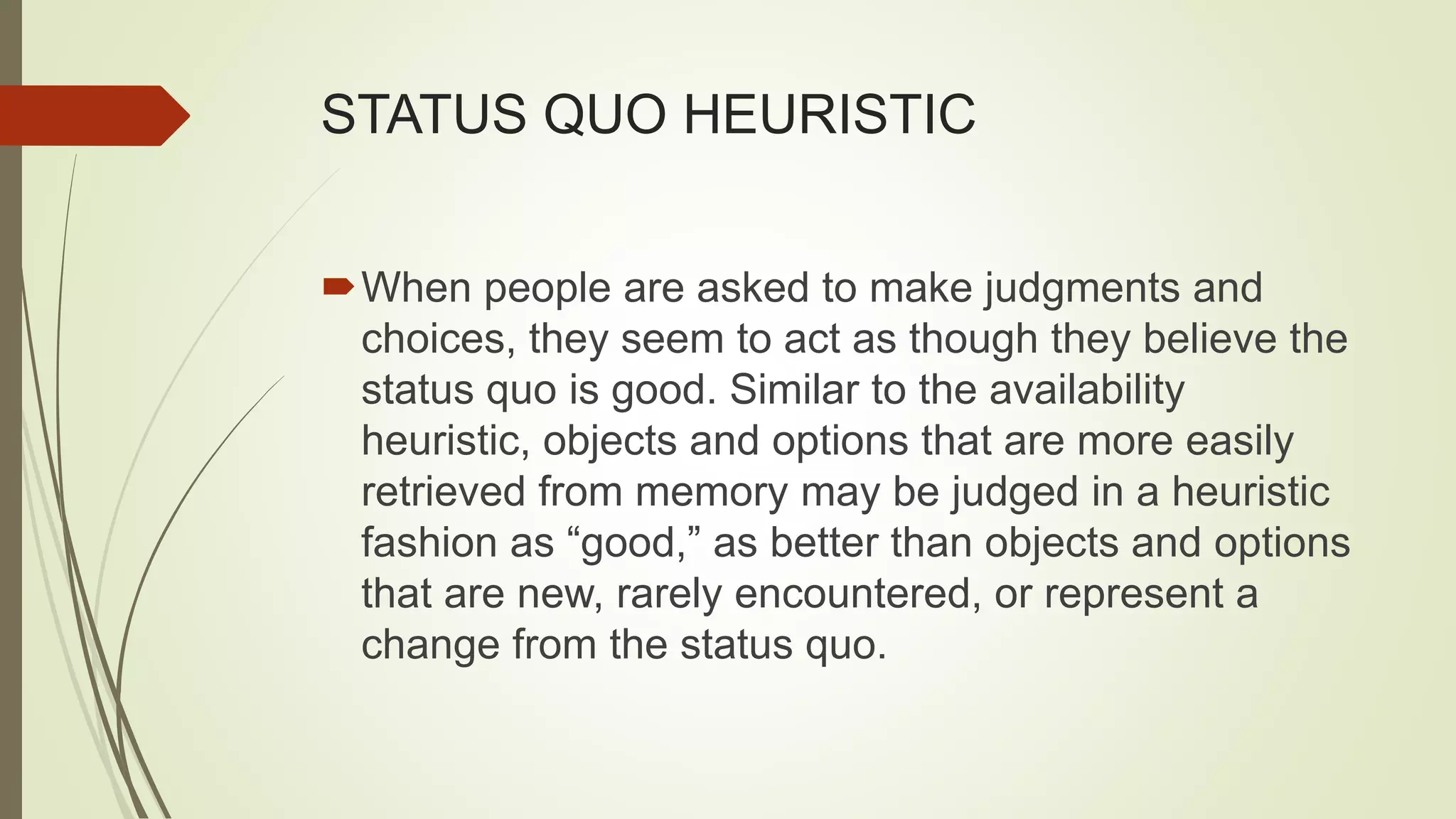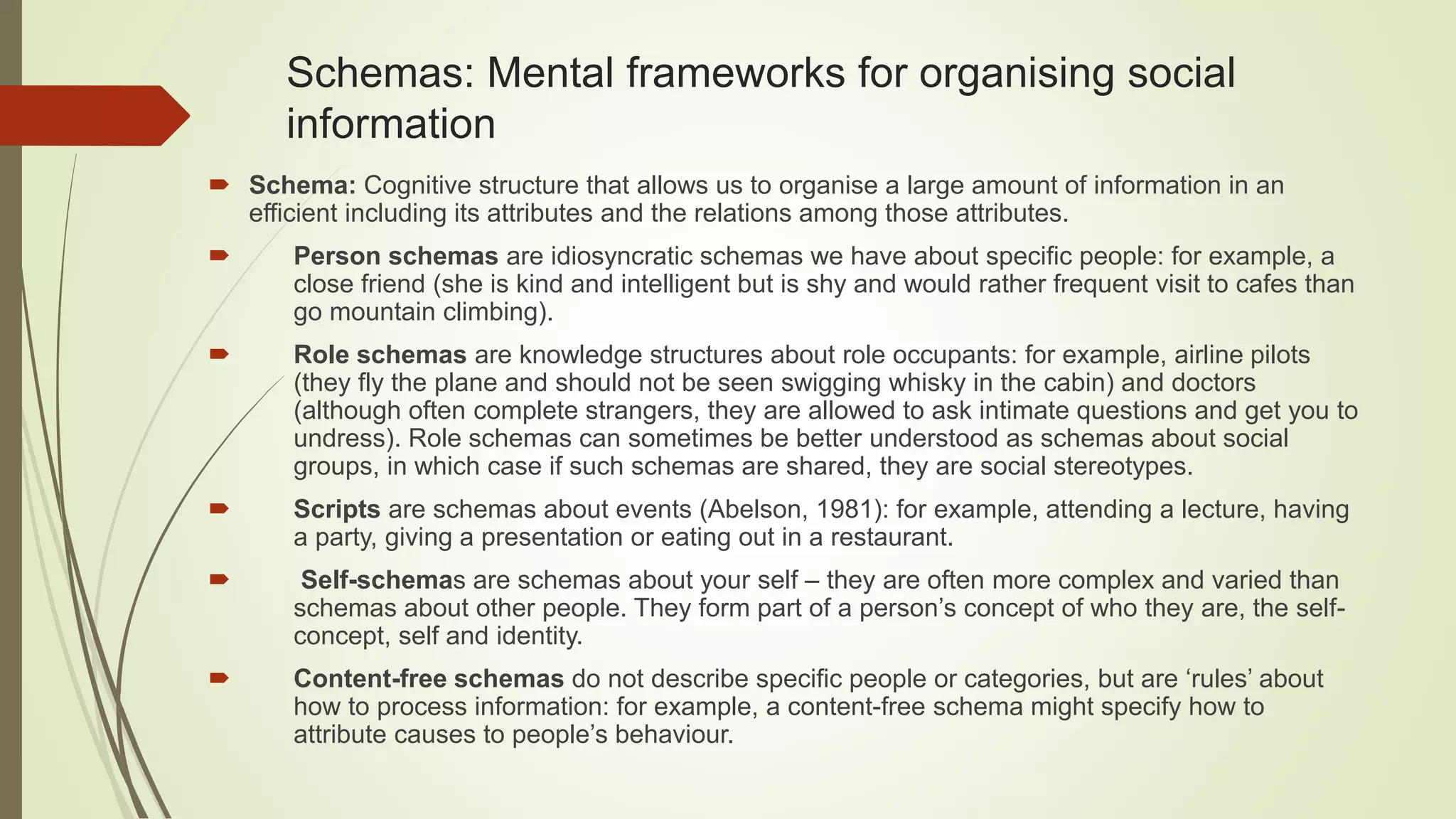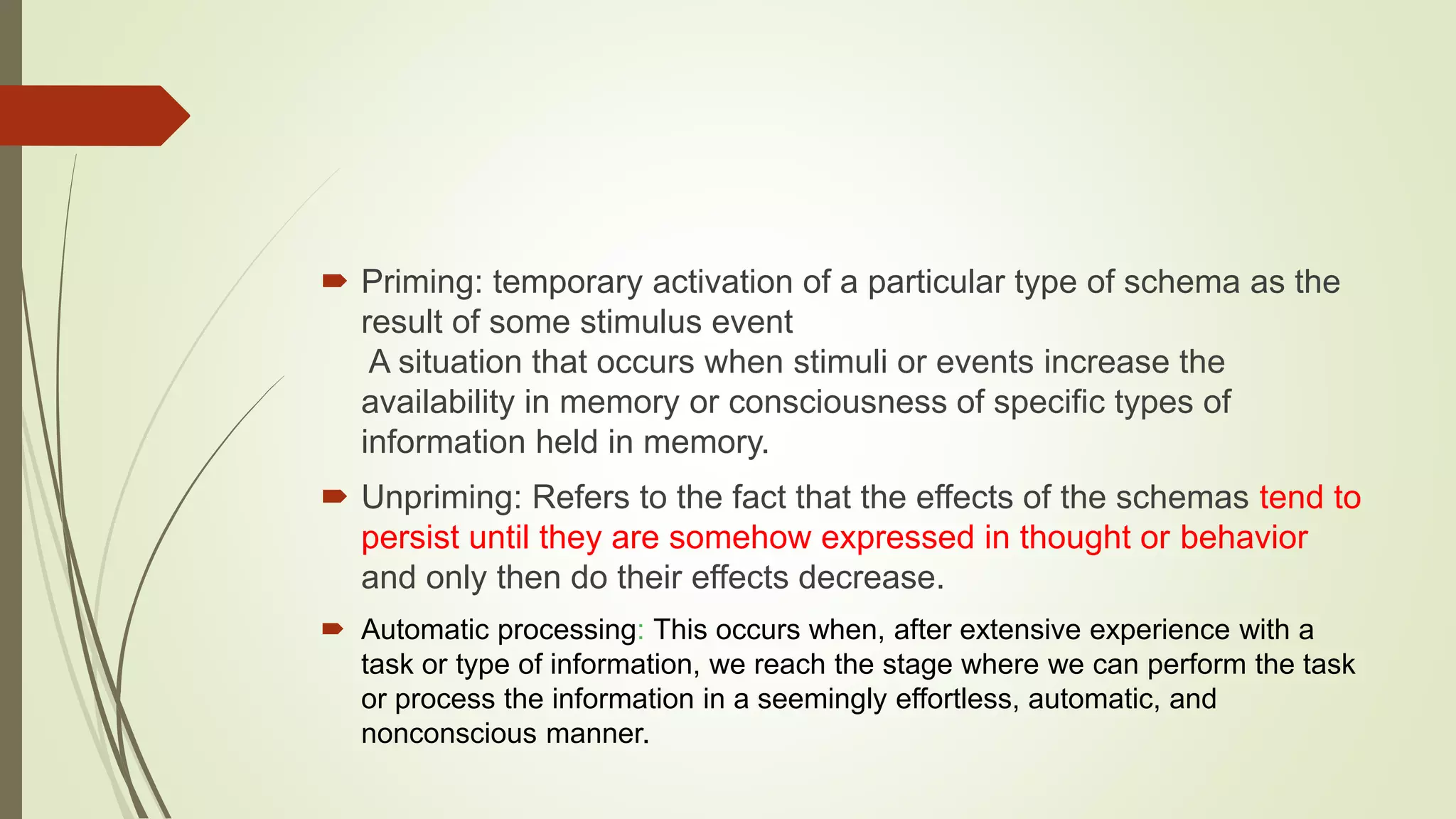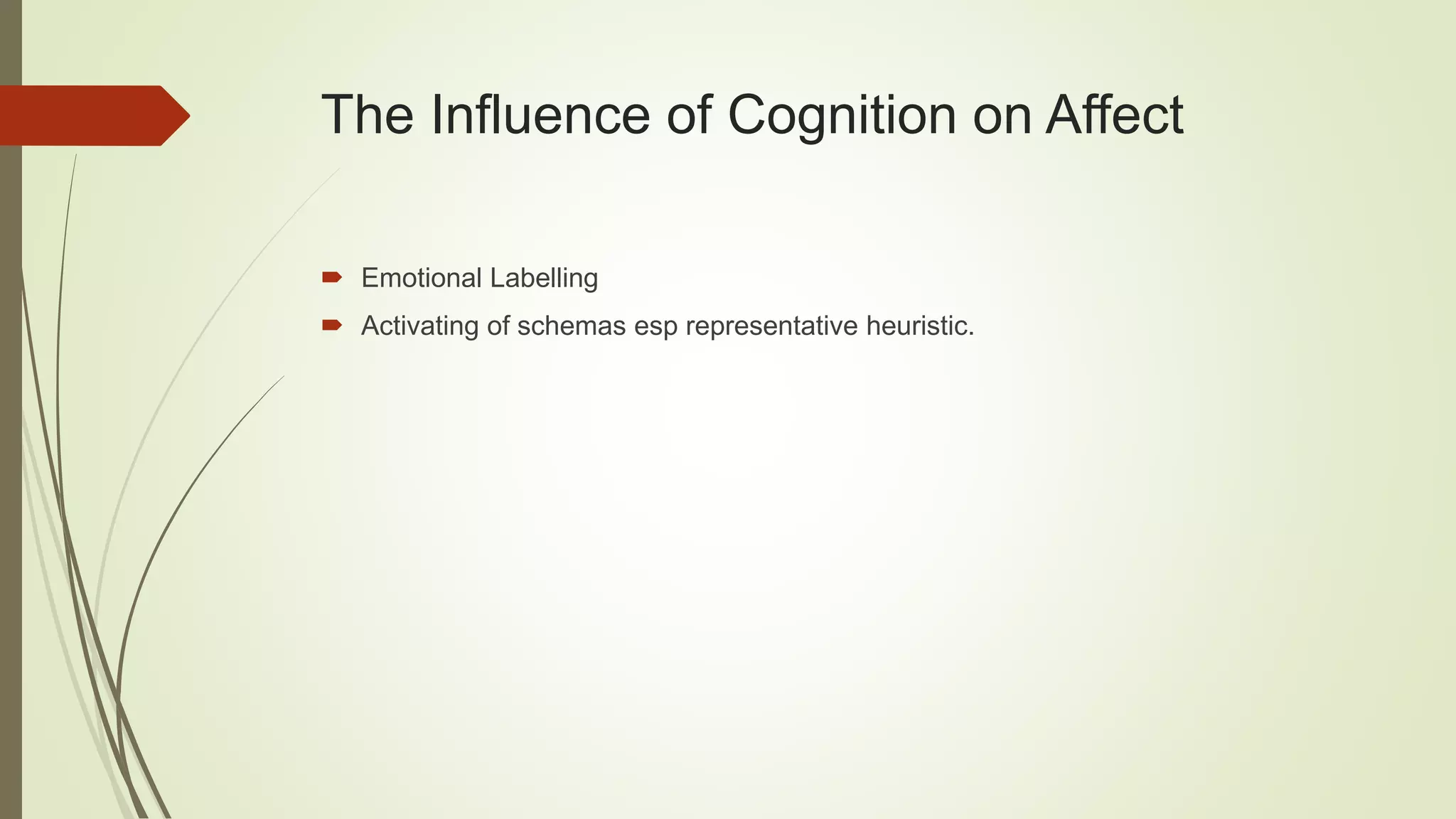Social cognition involves the cognitive processes and structures that influence and are influenced by social behavior. It includes how we interpret, analyze, remember, and use social information. Heuristics like representativeness and availability allow for rapid judgments but can lead to errors. Schemas are mental frameworks that organize social information and impact attention, encoding, and retrieval of memories. Both affect and cognition influence each other - our moods shape our perceptions and memories, while activating schemas can in turn influence our feelings.








